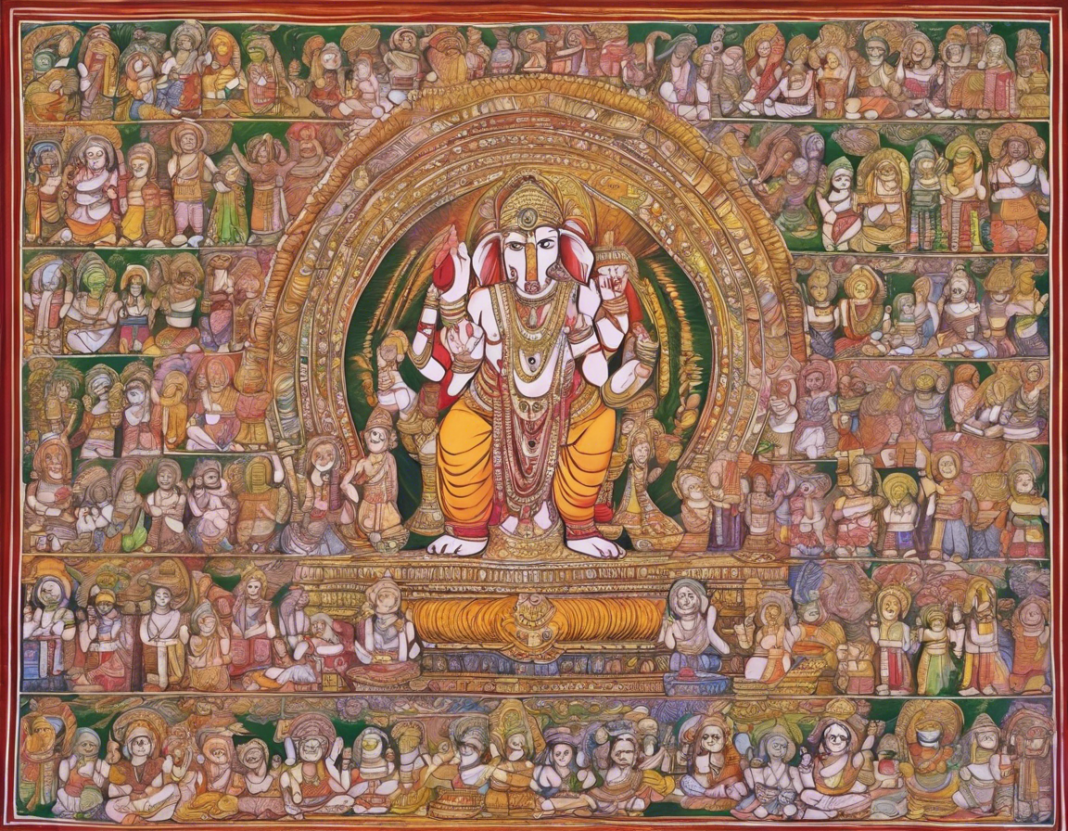India is a land rich in culture, heritage, and diversity. Bharat Ka Manchitra, translated as the “Cultural Map of India,” is a term that encapsulates the varied cultural landscape of this vast country. From the snow-clad peaks of the Himalayas to the sandy shores of the Indian Ocean, India’s cultural map is as diverse as it is colorful. In this article, we will delve into the intricacies of Bharat Ka Manchitra, exploring the various elements that make up India’s vibrant cultural tapestry.
Geographical Diversity
India is a country of diverse landscapes, each region boasting its own unique culture, traditions, and practices. From the deserts of Rajasthan to the backwaters of Kerala, every corner of India has something distinctive to offer. The Himalayas in the north provide a stark contrast to the coastal regions of the south, while the Northeastern states have their own tribal cultures that set them apart from the rest of the country.
Cultural Heritage
India’s cultural heritage is as ancient as it is rich. The country is home to several UNESCO World Heritage sites that bear testimony to its glorious past. From the majestic Taj Mahal in Agra to the ancient temples of Khajuraho and Hampi, each monument is a reflection of India’s historical and cultural significance. The art and architecture of these sites speak volumes about the intricate craftsmanship and architectural brilliance of the bygone eras.
Festivals and Celebrations
India is a land of festivals, with each state and region celebrating its own set of festivities with great fervor. From the colorful Holi celebrations in the north to the grand Durga Puja in the east, and the vibrant Onam festival in the south, every festival has a unique significance attached to it. These celebrations not only showcase the cultural diversity of India but also bring people together in a spirit of harmony and unity.
Cuisine and Culinary Traditions
Indian cuisine is as diverse as its culture, with each region boasting its own unique flavors and cooking styles. From the spicy curries of the north to the coconut-infused dishes of the south, and the seafood delicacies of the coastal regions, Indian cuisine is a gastronomic delight for food lovers. The use of spices and herbs in Indian cooking adds a distinct flavor profile to the dishes, making them both delicious and aromatic.
Art and Handicrafts
India has a rich tradition of art and handicrafts, with each region specializing in its own craft forms. From the embroidery work of Gujarat to the pashmina shawls of Kashmir, and the Tanjore paintings of Tamil Nadu, Indian handicrafts are a true reflection of the country’s cultural ethos. These traditional art forms not only showcase the skill and creativity of the artisans but also provide a glimpse into India’s artistic heritage.
Languages and Literature
India is a multilingual country, with each state having its own language and script. The literary traditions of India are as diverse as its languages, with ancient texts like the Mahabharata and the Ramayana holding pride of place in Indian literature. The works of literary giants like Rabindranath Tagore, Kalidasa, and Mirza Ghalib have left an indelible mark on Indian literature, inspiring generations of writers and poets.
Religious Diversity
India is a land of diverse religions, with Hinduism, Islam, Christianity, Sikhism, Buddhism, and Jainism being some of the major religions practiced in the country. Each religion has its own set of rituals, traditions, and festivals that are an integral part of Indian society. The religious diversity of India is a testament to the country’s ethos of unity in diversity.
FAQs (Frequently Asked Questions)
- What is the significance of Bharat Ka Manchitra in Indian culture?
-
Bharat Ka Manchitra symbolizes the diverse cultural landscape of India, showcasing the country’s rich heritage and traditions.
-
How does geographical diversity influence India’s cultural map?
-
Geographical diversity plays a key role in shaping India’s cultural map, with each region having its own unique cultural practices and traditions.
-
What are some must-visit UNESCO World Heritage sites in India?
-
Some must-visit UNESCO World Heritage sites in India include the Taj Mahal, Khajuraho temples, and Hampi ruins.
-
What are some popular festivals celebrated in India?
-
Popular festivals celebrated in India include Diwali, Holi, Durga Puja, Eid, Christmas, and Baisakhi, among others.
-
How does Indian cuisine reflect the country’s cultural diversity?
-
Indian cuisine reflects the cultural diversity of the country through its use of spices, cooking techniques, and regional flavors.
-
What are some famous art forms and handicrafts of India?
-
Famous art forms and handicrafts of India include Madhubani paintings, Kalamkari art, Chikankari embroidery, and Pattachitra paintings.
-
How many languages are spoken in India?
-
India is home to 22 officially recognized languages and over 19,500 distinct dialects, showcasing its linguistic diversity.
-
What role do religious traditions play in Indian society?
-
Religious traditions play a significant role in Indian society, shaping the cultural practices, customs, and beliefs of the people.
-
How has Indian literature influenced the cultural landscape of the country?
-
Indian literature, with its rich literary tradition and ancient texts, has played a pivotal role in shaping the cultural ethos of the country.
-
Why is India often referred to as a land of unity in diversity?
- India is often referred to as a land of unity in diversity due to its multicultural, multi-ethnic, and multilingual society that coexists harmoniously.
In conclusion, Bharat Ka Manchitra is more than just a cultural map of India; it is a reflection of the country’s soul, its essence, and its spirit. The myriad hues of India’s cultural tapestry come together to form a vibrant mosaic that is as unique as it is enchanting. As we navigate through the lanes and bylanes of this diverse country, we come to realize that India’s cultural map is not just a geographical delineation but a living, breathing entity that pulsates with the heartbeat of its people.

